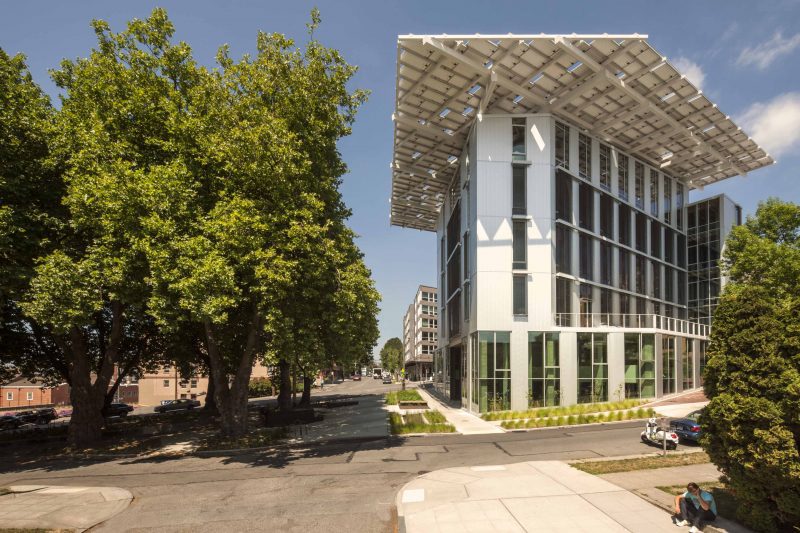Miller Hull
- Portfolio
- Approach
- News
Events
2024 West Region Conference – Cultural Crossroads in Education: Ruth Baleiko
Posted March 26, 2024
- About
- Connect
Five years later: Earth Day marks the fifth anniversary of Bullitt Center and showcases the success of sustainable design
4-23-2018 |
By Chris Hellstern, AIA, LFA, LEED AP BD+C, CDT
Living Building Challenge Services Director
On this Earth Day, we celebrate the fifth anniversary of Seattle’s Bullitt Center. As the largest building certified under the Living Building Challenge at the time, the project was not just about the idea of deep sustainability or the design features that provided the building’s energy and treated its water. Instead, the Bullitt Center had to be replicable and five years later it has proven to be. This project was built at market rate and is now fully occupied. It has produced not just 100 percent of its energy but 115 percent. This regenerative, market-rate, urban building shows that it can be an economically viable, positive environmental solution in today’s built environment.
Among some of the first Living Buildings, the Bullitt Center has helped change the landscape for what ispossible in architecture today. But, it is not just about what we can build. The Living Building Challenge is about the process of designing regenerative work that supports our environment. It has also helped shift how we do business. The Living Building Challenge has led the way to making it possible to investigate these concepts on every project we undertake at Miller Hull. A performance-based design approach does work and we see the success on a range of building features from energy savings to indoor occupant comfort.
We’re now in the second version of our recently updated Sustainability Action Plan at Miller Hull. Living Buildings like the Bullitt Center, the Kendeda Center for Innovative Sustainable Design, our own Seattle studio and even some of the first projects designed by founders David Miller and Robert Hull, have allowed us to pursue meaningful sustainable design on every project. We examine net positive energy and net positive water, a materials Red List, equity and social justice concerns on every project we undertake. Through the lens of our rigorous Sustainability Action Plan, we have the methods to track and improve our process and hold ourselves accountable to designing as sustainably as possible.
We are thankful to have been part of the team that created the Bullitt Center. From the inspirational vision of Denis Hayes, president and CEO of the Bullitt Foundation, to every engineer and craftsperson who worked on this project and all the tenants who now occupy the building, we are grateful for the people and organizations that helped show the world a more sustainable path forward. Today, we are appreciative of our clients who help us make buildings that are healthier for their occupants. From scientists to health professionals to craftspeople, we rely on all those who support these efforts with their service of expertise. On this Earth Day, we are hopeful because of the efforts of so many who continue to work alongside us to chart a new course forward for rapid and positive environmental impact in the built environment.
Let’s start a conversation. At Miller Hull, we want to know how you are working to support human and environmental health. We are all in this work together, on Earth Day and every day.
Related Articles
Whidbey Island Retreat by Miller Hull Partnership, Washington
Location: Whidbey Island, Washington Project size: Main house, 2,300 square feet; guest house, 560 square feet Program: A secluded…
5-24-2020 | News
East County Office & Archives featured in KTIRIO EDITIONS
The architectural publication based in Greece, highlights 20 energy efficient buildings including East County Office &…
4-4-2023 | News
Perspectives. It’s time to do more to help save our environment
By Chris Hellstern, AIA, LFA, LEED AP BD+C, CDT Living Building Challenge Services Director Urgency. That…
5-17-2019 | Perspectives
Mérida: They will replace the old US Consulate with a huge building in Via Montejo
MÉRIDA, Yuc.- This Thursday the construction of the new facilities of the Consulate General of the United…
11-20-2020 | News
××
